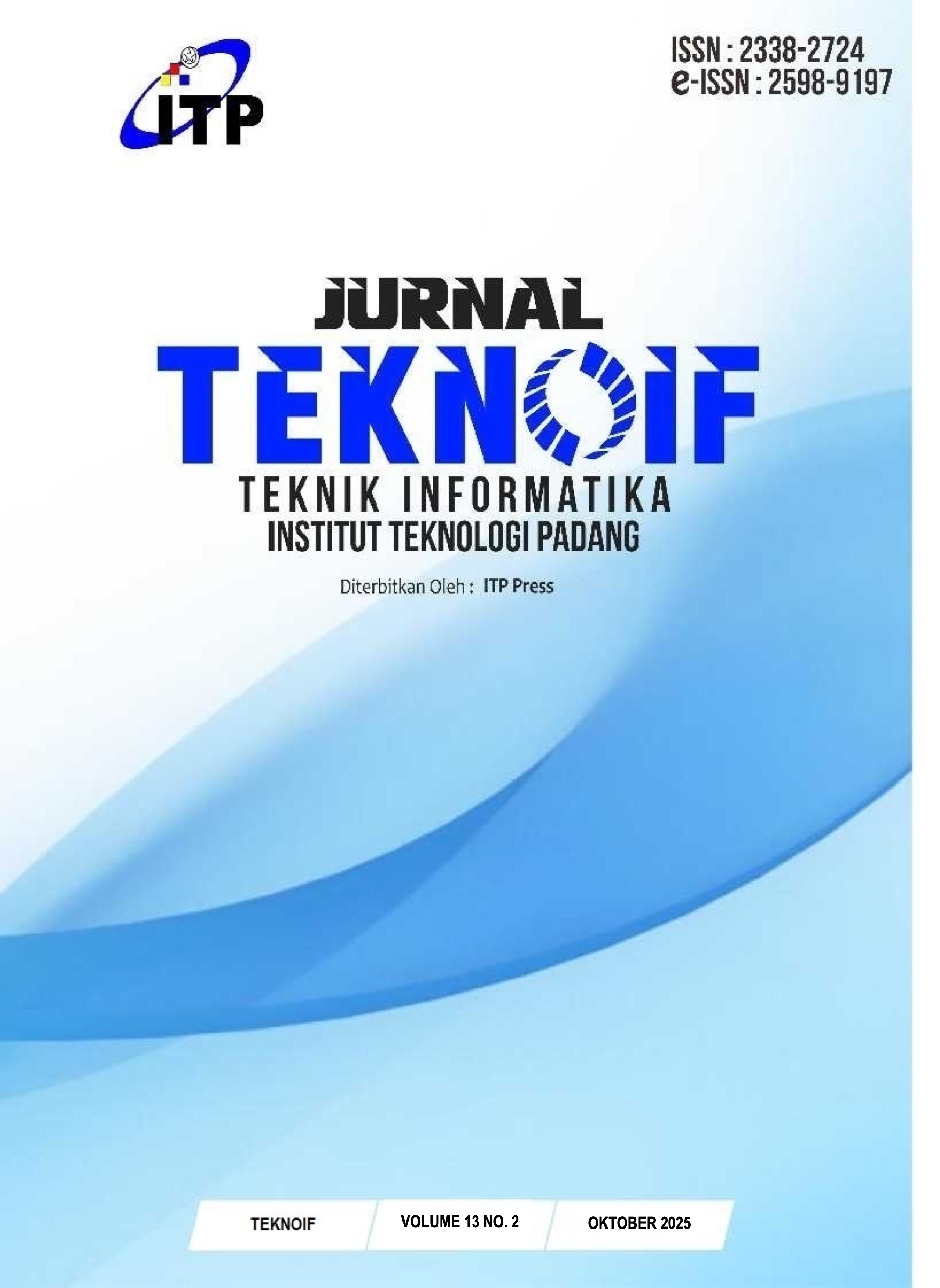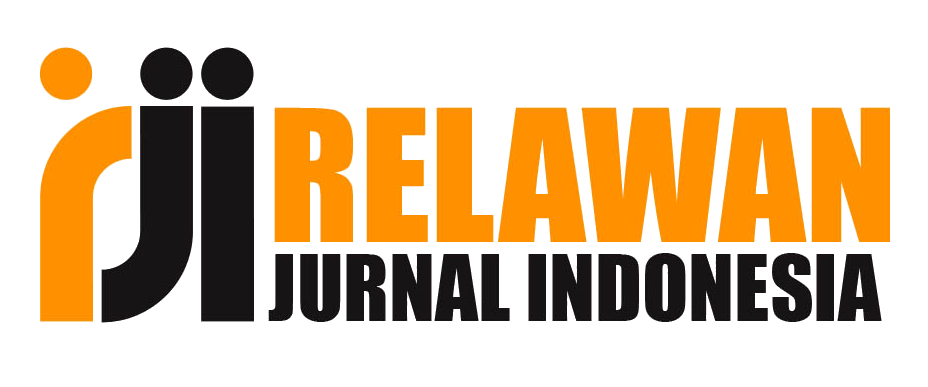SISTEM INFORMASI GEOGRAFIS PEMETAAN JENIS KEKERASAN TERHADAP PEREMPUAN DI JAWA TENGAH MENGGUNAKAN METODE K-MEANS CLUSTERING
DOI:
https://doi.org/10.21063/jtif.2025.V13.2.77-86Keywords:
Kekerasan terhadap Perempuan, K-Means Clustering, Sistem Informasi Geografis, Klaster spasial, QGISAbstract
Violence against women is a social issue with widespread impacts and remains highly prevalent in Indonesia, including in Central Java Province. The forms of violence include physical, psychological, and sexual abuse, exploitation, neglect, and others. Presenting data in a general form without spatial mapping often makes it difficult to identify regions with high levels of vulnerability. This study aims to cluster regencies/municipalities in Central Java based on types of violence against women by integrating the K-Means Clustering method with Geographic Information Systems (GIS). The data used are records of violence against women in 2024 from 35 regencies/municipalities. The K-Means method was applied iteratively until reaching a convergent condition, resulting in three main clusters. The clustering results were visualized using QGIS software in the form of thematic maps, facilitating the interpretation of spatial patterns. The evaluation shows that spatial classification was successfully applied with a spatial match rate of 100%, and a Silhouette Score of 0.577, indicating a moderately good cluster quality. The majority of regions are included in the low cluster, while only one region is in the high cluster. This study concludes that the combination of K-Means and GIS is effective in detecting and visualizing regional vulnerability to violence against women and has the potential to serve as a basis for developing more targeted and evidence-based protection policies. It is recommended that future research expand the dataset, include additional risk variables, and explore alternative clustering methods or advanced spatial analyses to improve the accuracy and understanding of violence patterns.
References
[1] K. D. Adisti and N. L. Meilani, “Efektivitas Penanganan Kekerasan pada Perempuan dan Anak oleh UPT Perlindungan Perempuan dan Anak Kota Pekanbaru,” SAKOLA J. Sains Coop. Learn. Law, vol. 1, no. 2, pp. 111–123, Sept. 2024, doi: 10.57235/sakola.v1i2.3232.
[2] V. P. Larasati, D. Lituhayu, and E. L. Setianingsih, “Mismanagement Dalam Pencegahan Kekerasan Terhadap Perempuan Dan Anak Oleh Dinas Pemberdayaan Perempuan Dan Perlindungan Anak (DP3A) Kota Semarang”.
[3] N. H. Wulandari, S. A. Ningsih, and M. I. Sarita, “Sistem Informasi Geografis Kekerasan Terhadap Perempuan Dan Anak Berbasis Web (Studi Kasus : Dinas Pemberdayaan Perempuan Dan Perlindungan Anak Kota Kendari),” vol. 9, no. 1, 2025.
[4] L. U. Ilham, “Efektivitas Peran Dinas Pemberdayaan Perempuan Dan Perlindungan Anak Dalam Mencegah Tindak Kekerasan Pada Perempuan Dan Anak Di Kota Mataram Provinsi Nusa Tenggara Barat,” J. Gov. Polit. JGOP, vol. 1, no. 1, July 2019, doi: 10.31764/jgop.v1i1.941.
[5] B. Irawan, S. Syafrudin, and M. A. Budihardjo, “Integrasi Sistem Informasi Geografis Dan Machine Learning Dalam Analisis Kerentanan Lingkungan Perkotaan Terhadap Perubahan Iklim: Tinjauan Literatur,” vol. 1, no. 2, 2024.
[6] G. Wiro Sasmito, “Penerapan Metode Waterfall Pada Desain Sistem Informasi Geografis Industri Kabupaten Tegal,” J. Inform. J. Pengemb. IT, vol. 2, no. 1, pp. 6–12, Jan. 2017, doi: 10.30591/jpit.v2i1.435.
[7] Y. Y. Prasetya, A. Faisol, and N. Vendyansah, “Sistem Informasi Geografis Hasil Produksi Padi Di Kabupaten Malang Menggunakan Metode K-Means Clustering,” JATI J. Mhs. Tek. Inform., vol. 5, no. 2, pp. 806–814, Oct. 2021, doi: 10.36040/jati.v5i2.3788.
[8] F. Masykur, “Implementasi Sistem Informasi Geografis Menggunakan Google Maps API Dalam Pemetaan Asal Mahasiswa,” vol. 5, no. 2, 2014.
[9] J. Tamaela, E. Sediyono, and A. Setiawan, “Cluster Analysis Menggunakan Algoritma Fuzzy C-means dan K-means Untuk Klasterisasi dan Pemetaan Lahan Pertanian di Minahasa Tenggara,” J. Buana Inform., vol. 8, no. 3, Oct. 2017, doi: 10.24002/jbi.v8i3.1317.
[10] W. M. P. Dhuhita, “Clustering Menggunakan Metode K-Means Untuk Menentukan Status Gizi Balita,” J. Inform., vol. 15, no. 2, 2015.
[11] O. Meliza and T. Susanti, “Implementasi K-Means : Sebuah Studi Literatur”.
[12] M. Al Ghifari and W. T. Harsanti Putri, “Clustering Courses Based On Student Grades Using K-Means Algorithm With Elbow Method For Centroid Determination,” Inf. J. Ilm. Bid. Teknol. Inf. Dan Komun., vol. 8, no. 1, pp. 42–46, Jan. 2023, doi: 10.25139/inform.v8i1.4519.
[13] D. D. Darmansah and N. W. Wardani, “Analisis Pesebaran Penularan Virus Corona di Provinsi Jawa Tengah Menggunakan Metode K-Means Clustering,” JATISI J. Tek. Inform. Dan Sist. Inf., vol. 8, no. 1, pp. 105–117, Mar. 2021, doi: 10.35957/jatisi.v8i1.590.
[14] M. Ali Hasymi, A. Faisol, and Fx. Ariwibisono, “Sistem Informasi Geografis Pemetaan Warga Kurang Mampu Di Kelurahan Karang Besuki Menggunakan Metode K-Means Clustering,” JATI J. Mhs. Tek. Inform., vol. 5, no. 1, pp. 284–290, Feb. 2021, doi: 10.36040/jati.v5i1.3269.
[15] I. K. D. G. Supartha, M. Sudarma, and D. M. Wiharta, “Sistem Informasi Geografis Pemetaan Persebaran Alumni dengan Analisa Clustering,” Maj. Ilm. Teknol. Elektro, vol. 17, no. 3, p. 377, Dec. 2018, doi: 10.24843/MITE.2018.v17i03.P12.
[16] A. I. Agung and C. Mashuri, “Much. Zuyyinal Haqqul Barir,” vol. 04, 2019.
[17] A. Setiawan, S. Nining, and T. G. Laksana, “Persebaran Lokasi Praktek Bidan Melalui Penerapan Sistem Informasi Geografis Menggunakan Metode Clustering,” JIPI J. Ilm. Penelit. Dan Pembelajaran Inform., vol. 2, no. 1, May 2017, doi: 10.29100/jipi.v2i1.59.
[18] K. B. Aditya, “JURNAL TEKNIK INFORMATIKA, APRIL 2017 | 59”.
[19] D. N. Ramadhani, A. T. Harjanta, A. Tyogi, and S. A. Ajhara, “Implementasi Metode K-Means Pada Sistem Informasi Geografis Pemetaan Kerusakan Jalan di Dinas Pekerjaan Umum dan Penataan Ruang Kabupaten Jepara,” 2022.
[20] T. Suryani, A. Faisol, and N. Vendyansyah, “Sistem Informasi Geografis Pemetaan Kerusakan Jalan Di Kabupaten Malang Menggunakan Metode K-Means,” JATI J. Mhs. Tek. Inform., vol. 5, no. 1, pp. 380–388, Feb. 2021, doi: 10.36040/jati.v5i1.3259.
Downloads
Published
Issue
Section
License
Copyright (c) 2025 Novan Maulana, Aris Tri Jaka Harjanta, Mega Novita

This work is licensed under a Creative Commons Attribution-ShareAlike 4.0 International License.
This journal is licensed under a Creative Commons Attribution-ShareAlike 4.0 International License (CC BY-SA 4.0).
Authors retain copyright and grant the journal the right of first publication.
The work may be shared and adapted, even for commercial purposes, as long as appropriate credit is given and any new creations are licensed under the identical terms.
















